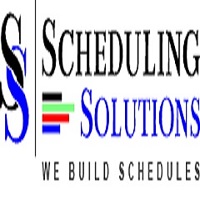
Project scheduling is a crucial aspect of project management that involves planning, organizing, and managing time and resources to complete a project efficiently. It includes defining tasks, setting deadlines, assigning responsibilities, and ensuring that everything runs according to plan.
Why Is Project Scheduling Important?
Effective project scheduling helps teams stay organized and ensures timely project completion. It minimizes risks, optimizes resource allocation, and enhances team collaboration. A well-structured schedule prevents delays, reduces costs, and improves productivity.
What Are the Key Elements of Project Scheduling?
1. Task Breakdown
-
Identify all project tasks.
-
Define task dependencies.
-
Estimate the duration of each task.
2. Resource Allocation
-
Assign team members and tools efficiently.
-
Manage workloads to prevent burnout.
3. Timeline and Milestones
-
Set realistic deadlines.
-
Mark key milestones to track progress.
4. Risk Management
-
Identify potential risks.
-
Develop contingency plans.
5. Monitoring and Adjustments
-
Track progress using project management tools.
-
Adjust schedules as needed to meet objectives.
What Are the Best Techniques for Project Scheduling?
1. Gantt Charts
A Gantt chart visually represents tasks, dependencies, and progress over time. It is an excellent tool for tracking project timelines.
2. Critical Path Method (CPM)
This technique identifies the longest sequence of dependent tasks and helps determine the shortest project duration.
3. Program Evaluation and Review Technique (PERT)
PERT is used to estimate project timelines by analyzing task durations and probabilities.
4. Agile Scheduling
Agile scheduling is used in dynamic environments where tasks evolve continuously. It emphasizes flexibility and iterative progress.
5. Resource Leveling
This method ensures that resources are distributed efficiently without overloading team members.
How to Create an Effective Project Schedule?
-
Define Project Scope: Outline project objectives and deliverables.
-
List All Tasks: Break down the project into manageable activities.
-
Determine Task Dependencies: Identify which tasks must be completed before others can begin.
-
Estimate Task Duration: Use historical data or expert judgment to set realistic timeframes.
-
Assign Resources: Allocate the right personnel and tools for each task.
-
Develop the Timeline: Organize tasks into a logical sequence with clear deadlines.
-
Monitor and Adjust: Track progress regularly and make necessary adjustments to stay on schedule.
What Are the Common Challenges in Project Scheduling?
1. Unclear Project Scope
Poorly defined objectives lead to scheduling errors and delays.
2. Inaccurate Time Estimates
Over- or underestimating task durations can cause missed deadlines.
3. Resource Constraints
Limited availability of personnel and tools can slow down progress.
4. Scope Creep
Additional project requirements can disrupt schedules and increase costs.
5. Poor Communication
Lack of coordination among team members leads to inefficiencies.
What Are the Best Tools for Project Scheduling?
-
Microsoft Project: A comprehensive tool for planning and tracking projects.
-
Trello: A user-friendly task management tool for smaller projects.
-
Asana: Ideal for team collaboration and task tracking.
-
Monday.com: A visual scheduling platform for managing workflows.
-
Smartsheet: Combines spreadsheets with project scheduling capabilities.
Conclusion
Project scheduling is essential for successful project management. By using effective scheduling techniques, setting realistic timelines, and utilizing the right tools, teams can optimize productivity and achieve project goals efficiently. Understanding the challenges and implementing best practices ensures that projects are completed on time and within budget.